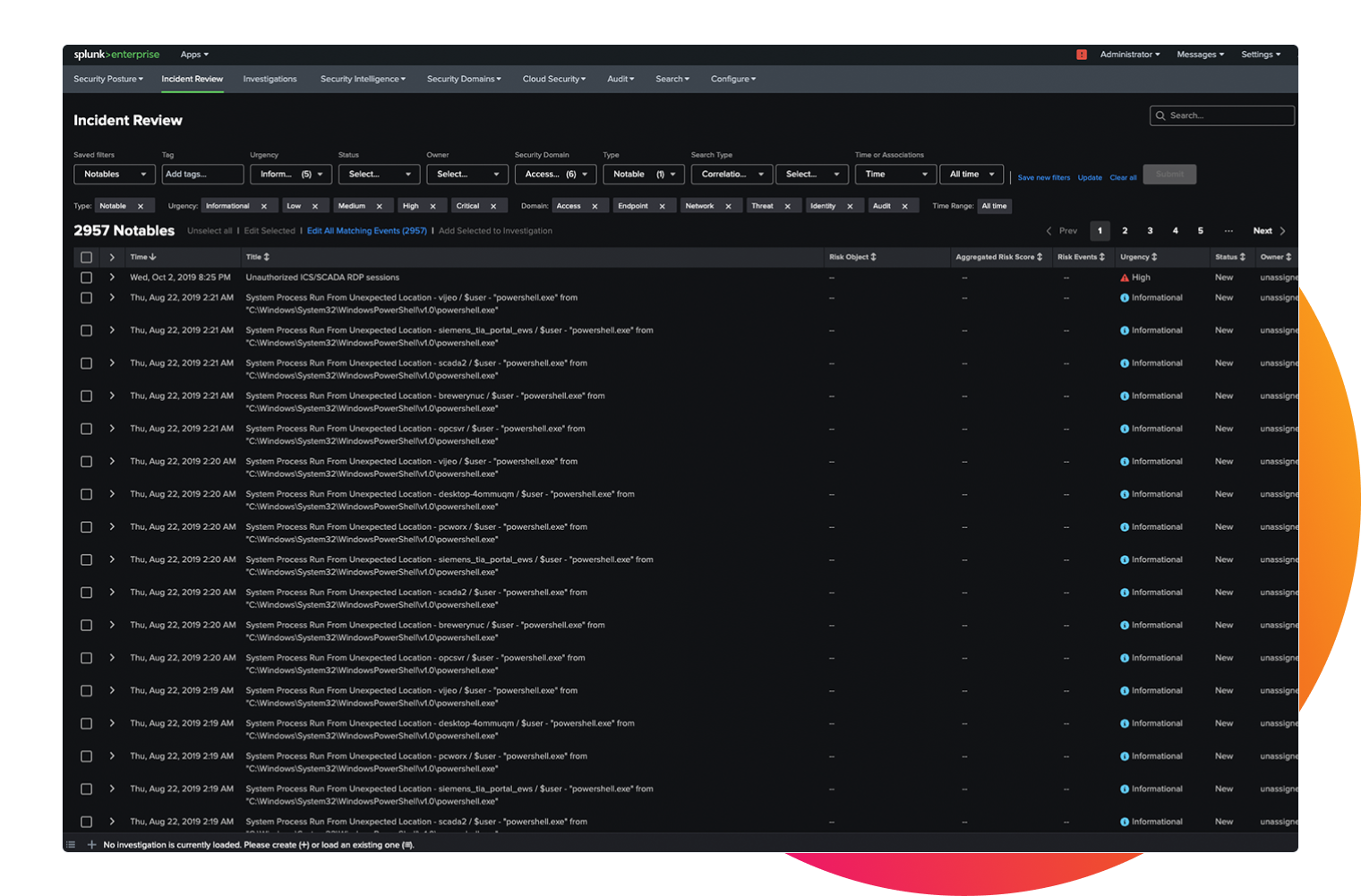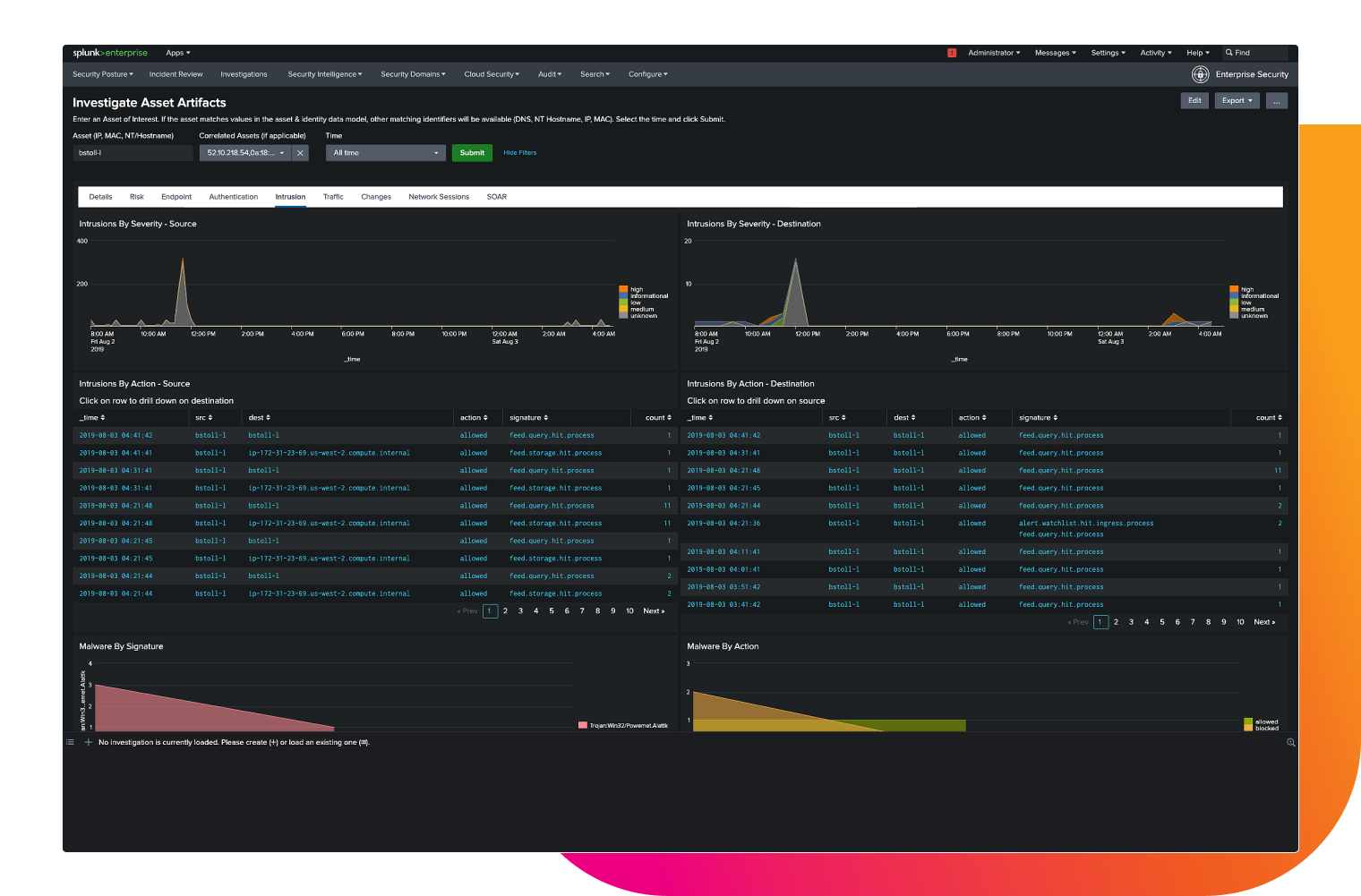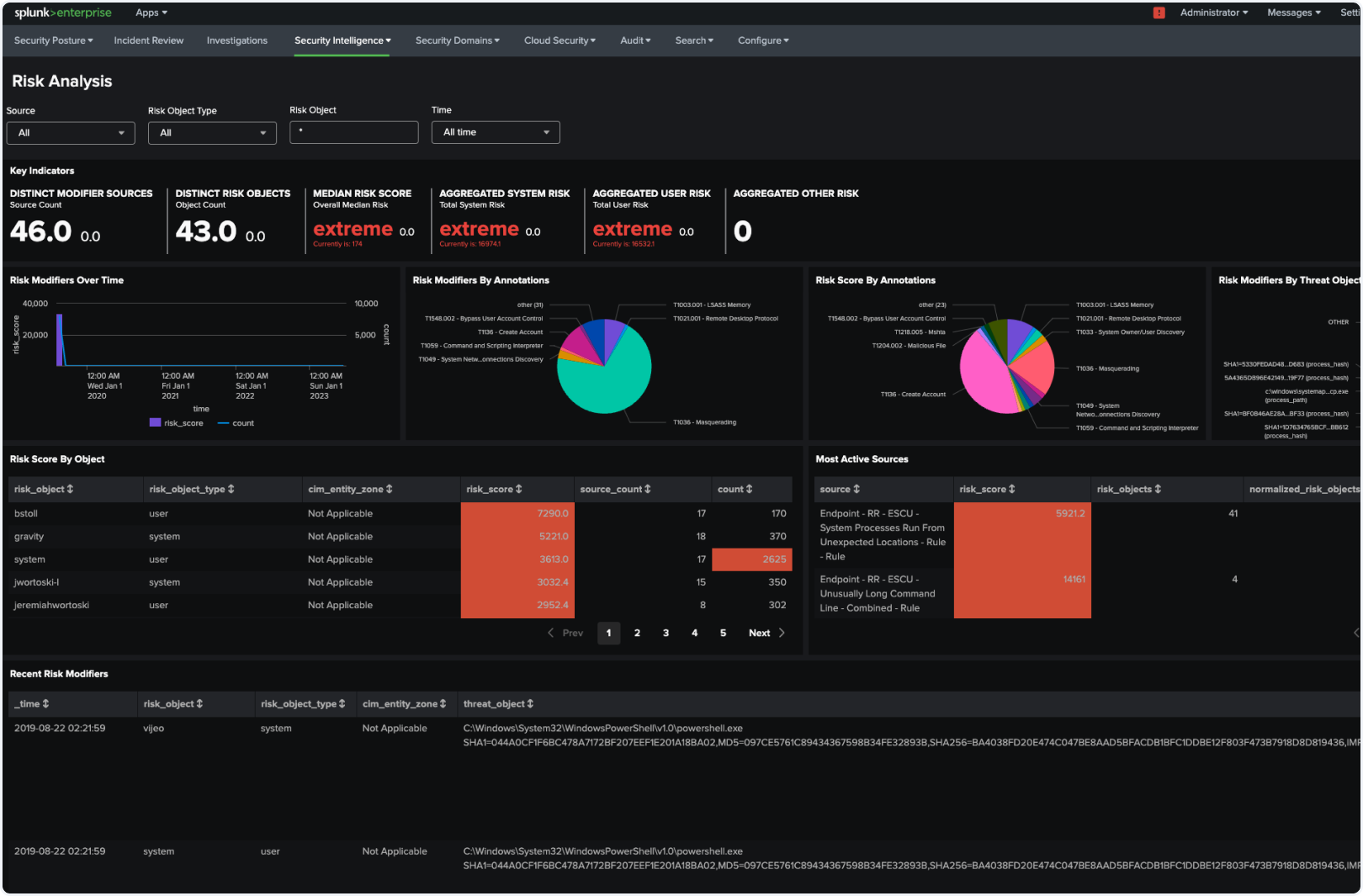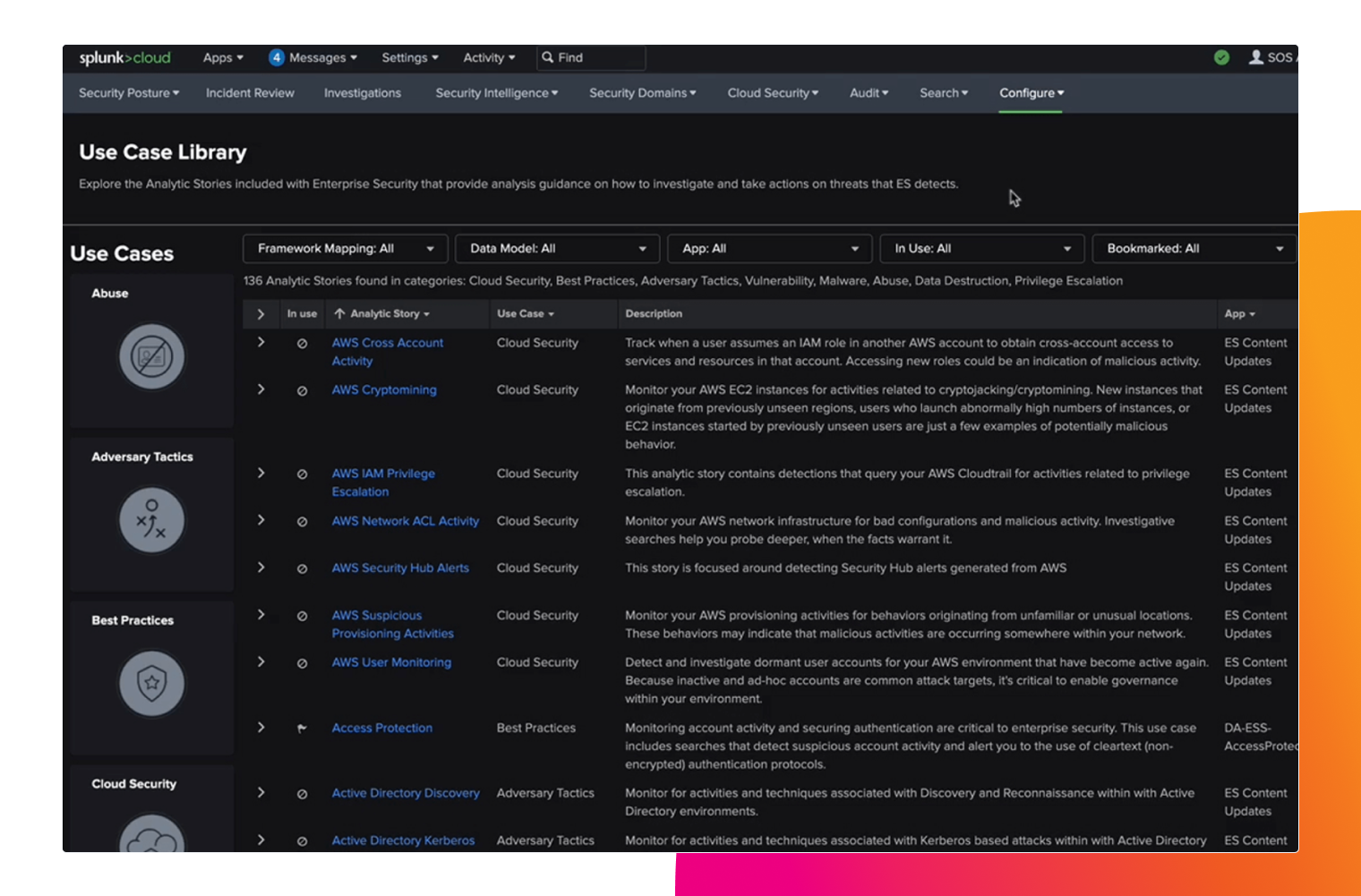Get data-driven insights for end-to-end visibility into your security posture to protect your business and mitigate risk — at scale.
solution
Detect faster, analyze better
Proactively uncover new threats
Become aware of hidden threats and, using flexible searches, proactively identify adversaries that may have found ways to establish a foothold in your organization's network.
Accelerate threat hunting
Use deep investigative capabilities and powerful behavior baselines on any entity, anomaly or threat.
Improved security posture
Identify and mitigate weaknesses in detection rules, tools and data collection.

Early stage threat detection
Cyber threat hunting can identify threats earlier than traditional detection-based security methods.
Splunk delivers strong data query functionality paired with IT observability data to deliver robust results and provide options for conducting advanced security operation functions, such as threat hunting in large data environments.

Improved response times
By detecting threats earlier in the attack lifecycle, security teams can promptly prevent or mitigate the impact of a potential cyber attack. This proactive approach allows for enhanced effectiveness and quicker response times.
Learn how Townsville City Council gained 24/7 holistic visibility to accelerate threat hunting and streamline security operations with Splunk.
With Splunk applied across all security operations... critical threats now never go unnoticed and are always escalated — quickly. Previously, it could take up to 50 minutes to explore a security issue. With Splunk, the team is now able to address concerns about 85% faster.



